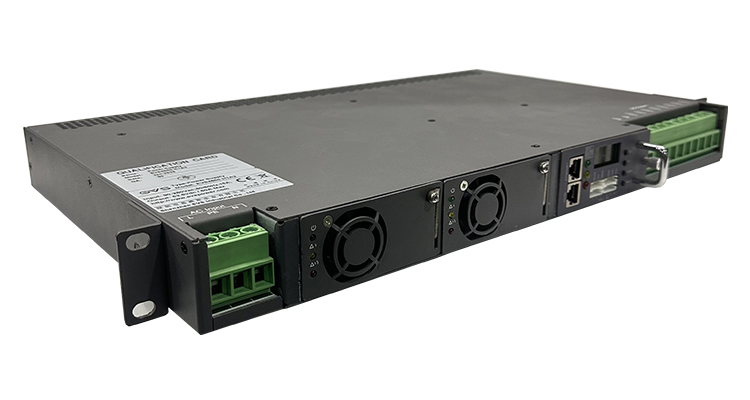24V DC Dual Rectifier
Dual Rectifier Systems in Telecom Power: Redundancy, Reliability, and Efficiency
1. Introduction
In mission-critical telecom and industrial applications, uninterrupted power supply is non-negotiable. Dual rectifier switching power systems have emerged as a gold standard for 24V DC power distribution, combining redundancy, high efficiency, and scalability. This article explains how dual rectifier systems work, their advantages, and why they are indispensable for modern infrastructure.
2. What is a Dual Rectifier System?
A dual rectifier system integrates two independent rectifier modules in parallel within a single power shelf. Each rectifier converts AC input to regulated 24V DC output while sharing the load or operating in redundancy mode.
Key Components:
AC-DC Rectifiers: High-efficiency switching modules (e.g., 1000W/2000W units).
Controller: Manages load sharing, fault detection, and battery charging.
Hot-Swap Design: Modules can be replaced without system shutdown.
3. Why Dual Rectifiers? Key Advantages
3.1 Redundancy for Maximum Uptime
N+1 Redundancy: If one rectifier fails, the other instantly takes the full load, ensuring zero downtime.
Critical for 5G/Edge Sites: Supports always-on networks for IoT, smart cities, and real-time communication.
3.2 High Efficiency and Energy Savings
Advanced Switching Topology: >95% efficiency (e.g., LLC resonant conversion).
Dynamic Load Sharing: Optimizes power distribution between rectifiers to minimize losses.
Example:
A 10kW dual-rectifier system saves 500+ kWh/year compared to legacy linear systems.
3.3 Scalability and Flexibility
Modular Design: Add rectifiers as power demands grow (e.g., from 1kW to 30kW).
Wide Input Range: Supports 90–300V AC, ideal for unstable grids in emerging markets.

4. Applications in Telecom and Beyond
4.1 Telecom Base Stations
Powers Remote Radio Units (RRUs), BBUs, and fiber optic equipment.
Integrates seamlessly with 24V battery backup systems.
4.2 Data Centers
Supports Open Compute Project (OCP) 24V DC architectures.
Reduces energy costs by eliminating multiple AC-DC conversions.
4.3 Industrial IoT and Renewable Systems
Compatible with solar/wind hybrid setups for off-grid sites.
5. Technical Specifications: What to Look For
When selecting a dual rectifier system, prioritize:
Efficiency: ≥94% at full load.
Power Density: Compact size (e.g., 3kW in 1U height).
Smart Monitoring: SNMP/Modbus interfaces for remote management.
Certifications: CE
6. Case Study: Dual Rectifiers in Action
A telecom operator in Southeast Asia upgraded to dual rectifier systems for 500+ base stations:
Result: 99.999% uptime, 18% lower energy costs, and 30% faster maintenance.
7. Conclusion
Dual rectifier switching power systems are no longer a luxury—they are a necessity for modern telecom and industrial power infrastructure. By offering redundancy, efficiency, and scalability, these systems future-proof networks while reducing TCO (Total Cost of Ownership).